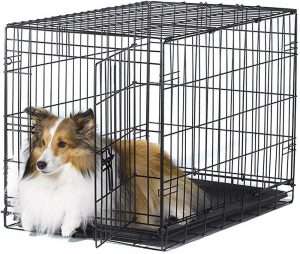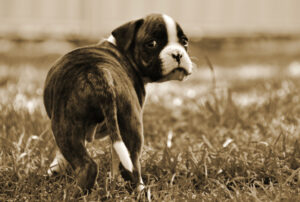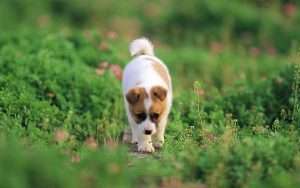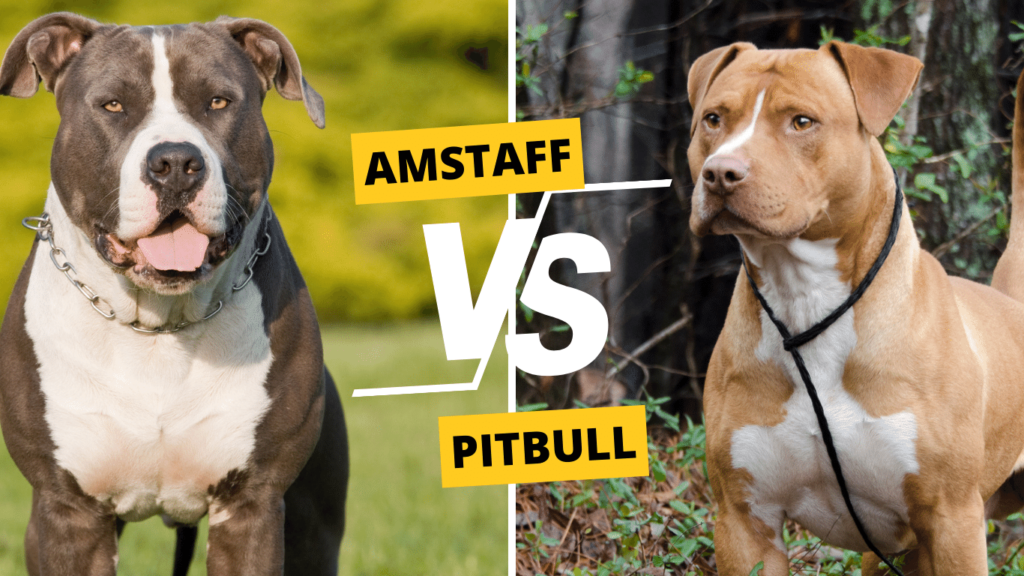
Amstaff vs Pitbull: 6 Key Differences
-
 By
Victoria Bennett
By
Victoria Bennett
- Last updated: November 8, 2023

If you’re considering a strong, determined, yet endearing canine companion, you might find yourself comparing Amstaff vs Pitbull. Renowned for their bravery and loyalty, these breeds come from a storied past. Despite their robust appearance, both breeds excel as therapy dogs, offering comfort with their unexpectedly gentle demeanor.
In this article, we’ll navigate through the six key distinctions between these affectionate protectors, as well as providing insights into what it’s like to have them not just as pets, but as loyal members of the family.
Table of Contents
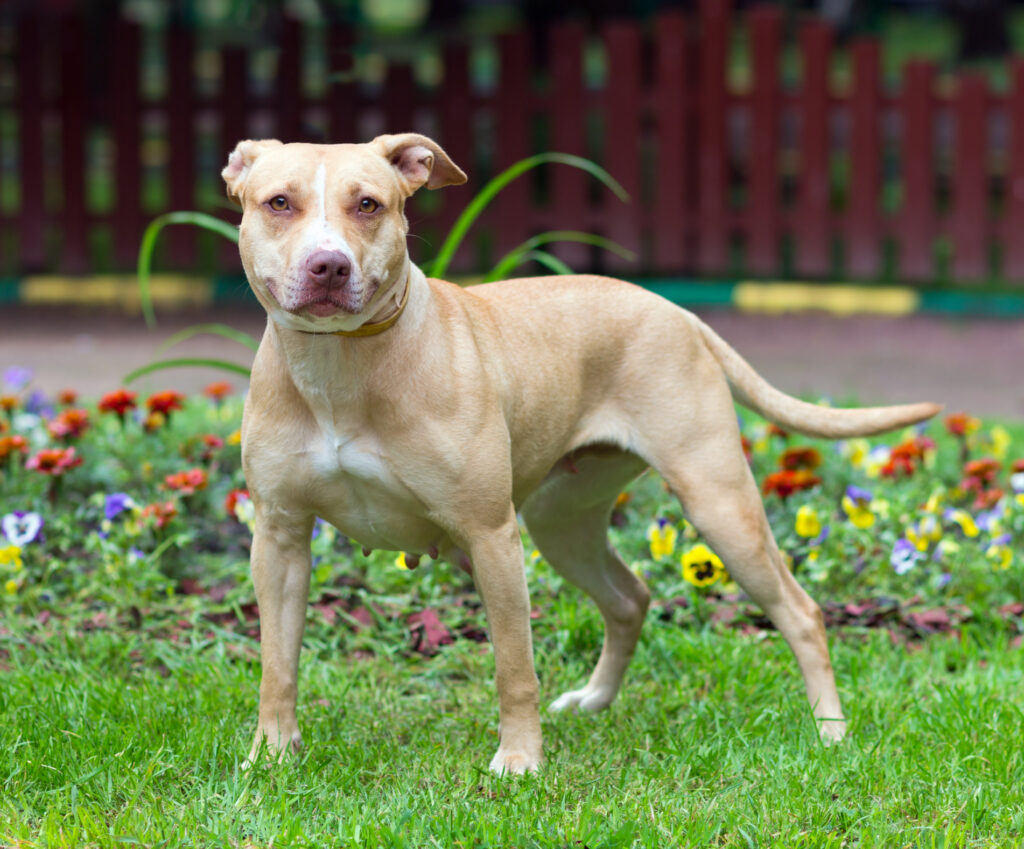
Amstaff vs Pitbull: 6 Key Differences Up Front
Breed Recognition
Amstaff: Recognized by the AKC with a detailed breed standard
Pitbull: Not recognized by AKC. Recognized by the UKC and ADBA
Size
Amstaff: Generally shorter and stockier
Pitbull: Leaner and more muscular
Head Shape
Amstaff: Typically has a broader head with well-defined cheek muscles
Pitbull: Has a more streamlined head shape
Coat and Color
Amstaff: Short, dense fur. Has recognized “breed standards” for coat colors
Pitbull: Also short, dense fur. Wider variety of colors and patterns
Temperament and Behavior
Amstaff: Known for being calmer and less athletic
Pitbull: Extremely friendly and more energetic
Trainability
Amstaff: Quick learners, ideal for first-time owners
Pitbull: Trainable with patience, suits experienced owners

Breed Recognition and Standards
In the realm of canine breeds, the American Staffordshire Terrier and the American Pit Bull Terrier often stir up confusion.
While the term “Pitbull” is commonly used to refer to the American Pit Bull Terrier, it’s actually an umbrella term that encompasses a range of breeds within the “bully” category. However, often when people say “Pitbull”, they are typically referring to the American Pit Bull Terrier.
For the sake of easy reading and sticking to their more casually and commonly used names, here we will simply refer to the American Staffordshire Terrier as “Amstaff”, and the American Pit Bull Terrier as “Pitbull”.
Pitbulls are not recognized by the American Kennel Club (AKC), which instead only acknowledges the Amstaff as a distinct breed with a specific breed standard.
The AKC delineates clear guidelines for the Amstaffs appearance, temperament, and behavior, which are used in conformation shows and as a blueprint for breeders.
In contrast, the Pitbull is recognized by the United Kennel Club (UKC) and the American Dog Breeders Association (ADBA), where it has its own standards that differ slightly from the AKC’s criteria for the American Staffordshire Terrier.
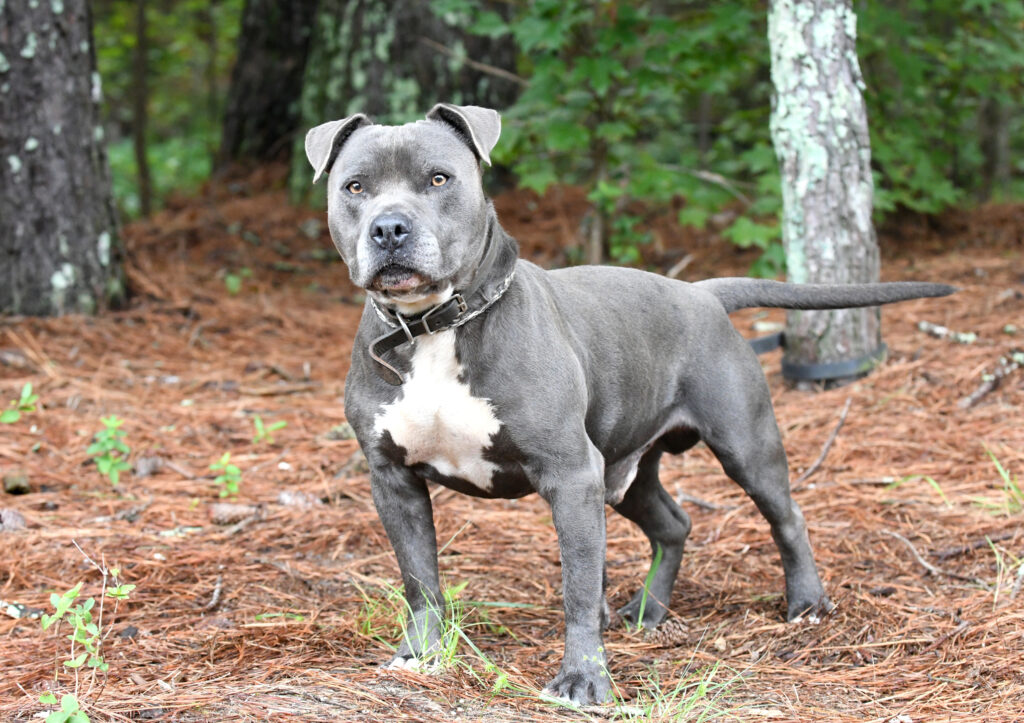
Physical Characteristics
Size and Weight
When examining the physical characteristics of the Amstaff and the Pitbull, notable differences become apparent.
The Amstaff generally exhibits a robust, stocky build, with males standing between 17 to 19 inches (43 to 48 cm) and weighing around 55 to 70 pounds (25 to 32 kg), while females tend to be slightly shorter at 17 to 18 inches (43 to 46 cm) and lighter, weighing between 40 to 55 pounds (18 to 25 kg).
In contrast, the Pitbull is typically leaner and more muscular, with males ranging in height from 18 to 21 inches (45 to 53 cm) and weighing 35 to 60 pounds (15 to 27 kg), and females standing 17 to 20 inches (43 to 51 cm) tall, weighing 30 to 50 pounds (13 to 22 kg).
Head Shape
The head shapes of Amstaffs and Pitbulls are distinct and one of the more noticeable differences between the breeds.
Amstaffs tend to have a broader skull, pronounced cheek muscles, and a distinct stop, giving them a more chiseled appearance.
In contrast, Pitbulls often have a more streamlined head with a longer muzzle and wider-set eyes, which contributes to a less blocky profile than the Amstaff.
Ears
The ears of Amstaffs and Pitbulls differ slightly, reflecting the breeds’ distinct head shapes.
Amstaffs usually have higher set ears that are short and can naturally fold over in a rose or half-prick shape.
Pitbulls’ ears are also set high but tend to be medium in size and fold over to create a more relaxed appearance.
Compared to other breeds, these two are quite different from, say, the long, floppy ears of a Basset Hound or the pointed, erect ears of a German Shepherd. The Basset’s ears contribute to a droopy, gentle expression, while the alert and attentive nature of the German Shepherd is complemented by its upright ears.
Each breed’s ear shape contributes to its unique look and sometimes to its historical function.
Coat and Color
Coat and color for both breeds include short, dense fur without an undercoat.
Amstaffs may present in solid colors, parti-color, or patched, with accepted colors including black, blue, fawn, white, red, and brindle.
Pitbulls also come in a wide variety of colors like blue, red, grey, and brindle, and can have diverse patterns including solid, patched, and striped.
Tail
The tails of the American Staffordshire Terrier and the American Pit Bull Terrier are similar in many respects, primarily because they share a common ancestry. Historically, both breeds had their tails docked for practical reasons such as preventing injury during dog fighting, a practice now widely condemned and illegal.
Today, both the Amstaff and the Pitbull typically have tails that are left natural. Their tails are medium in length, low-set, taper to a point, and are not overly thick. In a relaxed state, their tails tend to hang low, and when they are alert or excited, the tail may lift but usually does not curl over the back.
These characteristics are intrinsic to both breeds and contribute to their balanced, muscular appearance. Unlike some breeds bred for specific tail shapes or carriage for herding or hunting purposes, the tails of Amstaffs and Pitbulls are more a reflection of their general robustness and agility rather than a specialized tool.

Grooming and Maintenance
Amstaffs and Pitbulls both have relatively low grooming needs compared to other breeds.
Coat Care: Amstaffs and Pitbulls both boast a short, stiff coat that requires little in the way of daily grooming. A weekly brushing with a firm bristle brush is sufficient to keep their coat in good condition, helping to distribute natural skin oils and remove dead hair.
This is significantly less maintenance than breeds with longer hair or double coats, like Golden Retrievers or German Shepherds, which require frequent brushing to manage shedding and prevent matting.
Both Amstaffs and Pitbulls do not require regular professional grooming services as breeds with continuously growing hair, like Poodles or Shih Tzus, do. Bathing for Amstaffs and Pitbulls is infrequent, only necessary when they’re particularly dirty or smelly.
Shedding Management: Despite their short hair, both breeds are moderate shedders. Regular brushing, especially during seasonal changes, can help control shedding and keep your home hair-free. A de-shedding tool can be particularly effective during peak shedding periods.
Nail Trimming: Both breeds need their nails trimmed regularly to prevent overgrowth, which can cause discomfort or even injury. If you can hear their nails clicking on the floor, it’s time for a trim. This might be around every 3-4 weeks, but it varies depending on their activity level and the surfaces they walk on.
Ear and Teeth Health: To prevent infections, the ears of both the Amstaff and the Pitbull should be checked weekly for dirt, redness, or a bad odor, which can indicate an infection. When it comes to dental health, regular teeth brushing with canine toothpaste will help prevent tartar buildup and gum disease. Dental treats and toys designed to clean teeth can supplement brushing.
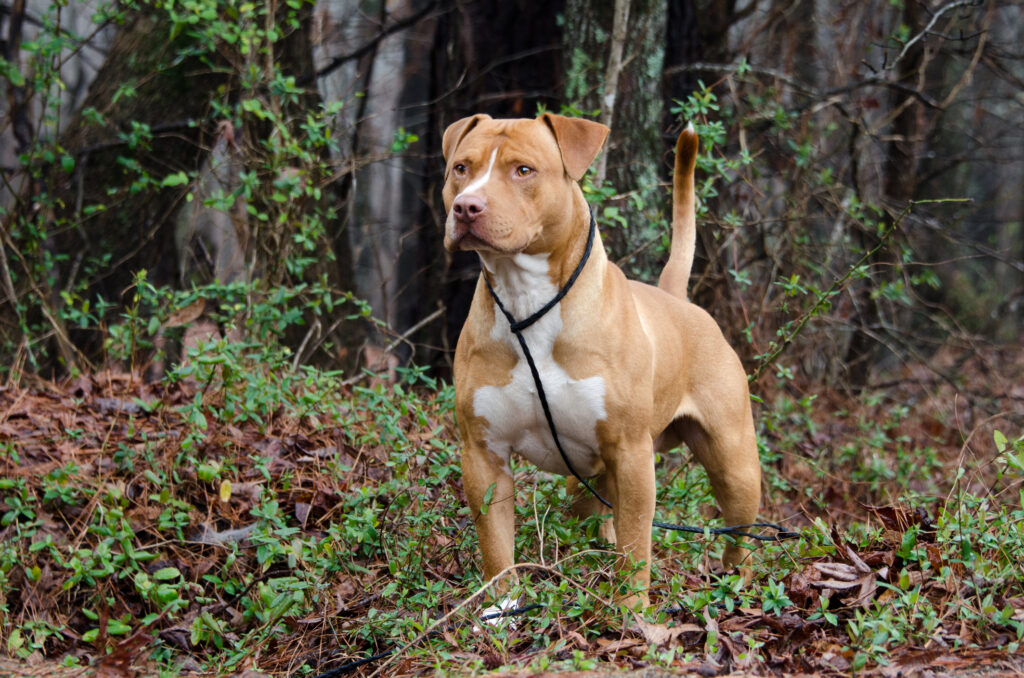
Temperament and Behavior
When comparing Amstaff vs Pitbull, it’s important to look beyond the surface and understand the nuances of each breed’s temperament and behavior.
The American Staffordshire Terrier, or Amstaff, often presents a composed and steady temperament in comparison with the vivacious and outgoing nature of the American Pit Bull Terrier. This energetic profile of the Pitbull aligns with its athletic prowess, making it a breed full of vitality and enthusiasm.
The historical narrative of both breeds is marred by their association with the cruel practices of bull-baiting and dog fighting, a legacy that has undoubtedly influenced their contemporary reputation. Despite this, it’s a testament to the breeds’ temperaments that, with the abolition of such sports and the introduction of positive training methods, both the Amstaff and the Pitbull have demonstrated a capacity for remarkable gentleness and loyalty, especially within a family dynamic.
Amstaffs and Pitbulls are both known for their affectionate nature toward children when properly socialized and trained. They are often protective and can be gentle companions, which has led to the nickname “nanny dogs” for their breeds in the past. However, there are slight differences in their interactions with children.
Amstaffs are known for being patient and tolerant, making them excellent family pets.
Pitbulls are also great with kids, but their higher energy levels mean they might be more boisterous during play, which requires supervision to ensure playtime remains safe, especially around smaller children.
With both breeds, teaching children how to interact safely and respectfully with dogs is crucial, as is proper socialization for the dogs from a young age. Early socialization and training are pivotal in harnessing their eagerness to please and mitigating any potential for aggression, particularly in the Pitbull, which can exhibit a strong prey drive if not correctly guided.
The Amstaff, while similarly requiring early socialization, may display a more subdued energy level, making it slightly less demanding in terms of physical exertion from its owners.
The “Amstaff vs Pitbull” comparison encapsulates more than just breed characteristics; it’s about acknowledging the impact of historical misuse while promoting a narrative of transformation and redemption that these breeds rightfully deserve. With a focus on education, proper care, and early socialization, the true, amiable nature of both breeds can shine through, countering any negative perceptions and highlighting their suitability as affectionate, dependable pets.

Space Requirements
Space requirements for Amstaffs and Pitbulls reflect their physical and psychological needs.
Amstaffs, while energetic, can adapt well to smaller spaces like apartments if they receive adequate daily exercise to channel their energy.
Pitbulls, on the other hand, typically display more vigor and may benefit from a larger space, such as a home with a yard, to accommodate their exercise needs.
Both breeds, however, prioritize human interaction over space and can thrive in any sized home as long as their physical and mental stimulation requirements are met consistently.
Health and Lifespan
In the Amstaff vs Pitbull health and lifespan comparison, it is important to note that both breeds are known for their strength and tenacity. However, like all purebred dogs, they have predispositions to certain health issues that potential owners should consider.
The American Staffordshire Terrier is a robust breed with an average lifespan of 12 to 16 years. They are prone to certain genetic conditions, such as hip dysplasia, cardiac diseases, and skin allergies. Their muscular build requires regular exercise to maintain optimal health, and a well-balanced diet is crucial for preventing obesity, which can exacerbate joint issues.
On the other hand, the American Pit Bull Terrier, often simply referred to as a Pitbull, shares a similar average lifespan of around 12 to 14 years. They can be susceptible to the same conditions as Amstaffs but also have their own set of common health concerns, including knee complications like anterior cruciate ligament tears, and congenital heart defects.
Maintaining a healthy lifestyle and regular vet check-ups can help detect and manage these issues early on.
While both the American Staffordshire Terrier and the American Pit Bull Terrier can enjoy long, healthy lives, prospective owners should be aware of the specific health risks associated with each breed. Regular exercise, preventive veterinary care, and a proper diet are key factors in promoting their well-being and longevity. It is also beneficial for owners to engage with breed-specific resources and support groups to stay informed about the best practices for maintaining their dog’s health.

Activity and Exercise Needs
Activity and exercise are pivotal components of a dog’s life, particularly when considering breeds like the American Staffordshire Terrier and the American Pit Bull Terrier, both of which are bursting with energy and vitality.
The American Staffordshire Terrier is an energetic breed that requires regular exercise to stay healthy and happy. Engaging an Amstaff in agility courses or obedience training harnesses their natural agility and intelligence. These activities also satisfy their strong desire for mental stimulation and a sense of purpose. For families, Amstaffs can be playful companions, eager to participate in games and outdoor activities, which are essential for expending their robust energy.
The American Pit Bull Terrier, commonly referred to as a Pitbull, exhibits an even higher energy level, necessitating a more intensive exercise regimen. They excel in activities that challenge their strength and stamina, such as weight pulling and advanced obedience competitions. Pitbulls are known for their athletic build and excel in sports that allow them to showcase their physical prowess. Their boundless enthusiasm makes them keen participants in interactive play with their human counterparts.
In comparison, both Amstaffs and Pitbulls have high exercise needs, the Pitbull may require more frequent and intense activity to match their spirited nature. Both breeds benefit immensely from early training and socialization, which can be seamlessly integrated into their exercise routines. These activities not only keep them physically fit but also serve to strengthen their social skills, making them well-rounded family pets.

Trainability
When it comes to trainability, both the Amstaff and Pitbull exhibit traits that make them well-suited to learning and obedience. These breeds are known for their intelligence and strong desire to please their handlers, which are hallmarks of trainable dogs. However, there are nuances in their learning styles and temperaments that prospective owners should consider.
Amstaff: The Amstaff is lauded for its keen intelligence, which makes it an excellent candidate for training. Their desire for human companionship and their innate wish to please their owners translate to a high level of responsiveness to training cues.
With a consistent approach and positive reinforcement techniques, such as treats and praise, Amstaffs can learn a wide array of commands and skills. Early socialization and puppy training classes are recommended to harness their potential and ensure they develop into well-adjusted adults.
Their versatility shines in various canine sports and activities, including obedience, agility, and even therapy work, demonstrating their well-rounded trainability.
Pitbull: The Pitbull shares a similar aptitude for training, underscored by their enthusiastic and loving nature. However, they can exhibit a certain degree of stubbornness, so a patient and persistent training approach is essential. Pitbulls respond best to positive training methods; harsh techniques can be counterproductive.
They are intelligent and capable of learning a vast range of behaviors and commands when engaged with consistency and respect. Their athletic build and high energy make them particularly well-suited for activities that require vigor and stamina. With the right training, Pitbulls can excel in advanced obedience, sports, and can also serve as affectionate and effective therapy dogs.
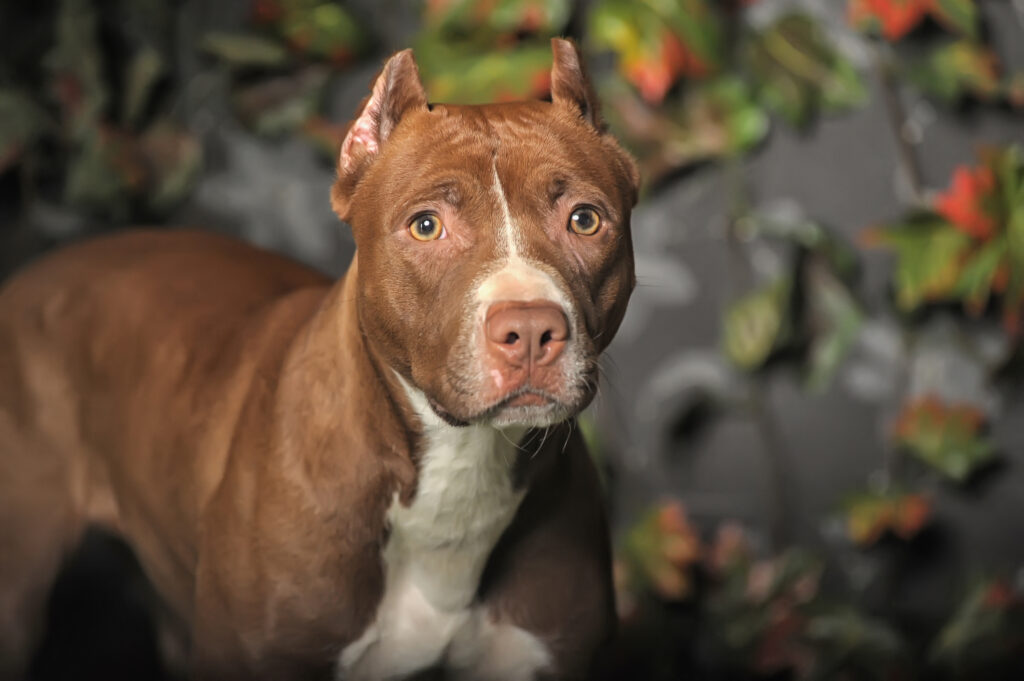
Popularity and Perception
The American Staffordshire Terrier and the American Pit Bull Terrier have both faced challenges in public perception, often bearing the brunt of negative stereotypes that overshadow their true natures. Historically depicted as aggressive due to their origins in dog fighting, they have been subjected to breed-specific legislation and media bias, contributing to an undeserved reputation.
Despite this, both breeds are known for their loyalty and affectionate disposition toward humans, particularly children. They have been celebrated for their gentle and protective instincts, earning the Amstaff and Pitbull a place in many families as beloved pets.
The public perception of the American Staffordshire Terrier and the American Pit Bull Terrier has been marred by their historical association with aggressive activities. Yet, their strong physique and formidable strength are not inherent indicators of aggression; rather, these traits often reflect poor ownership and upbringing.
Responsible ownership is key to nurturing their inherently affectionate nature. Poor ownership, which can lead to aggression in these breeds, includes neglect, abuse, lack of socialization, improper training, and failure to provide mental and physical stimulation. Owners must understand the breeds’ exercise needs, establish clear boundaries, and use positive reinforcement techniques.
Properly raised, Amstaffs and Pitbulls are loyal, loving, and can be exceptionally gentle with children. It’s crucial to advocate for informed and committed ownership to ensure these powerful dogs are a positive force within their communities.
Advocacy and education are slowly shifting perceptions, highlighting their capacity for companionship and the importance of responsible ownership over breed labeling. It’s essential to recognize these dogs not by the stigma of their past, but by their individual personality and the love they offer to their human companions.
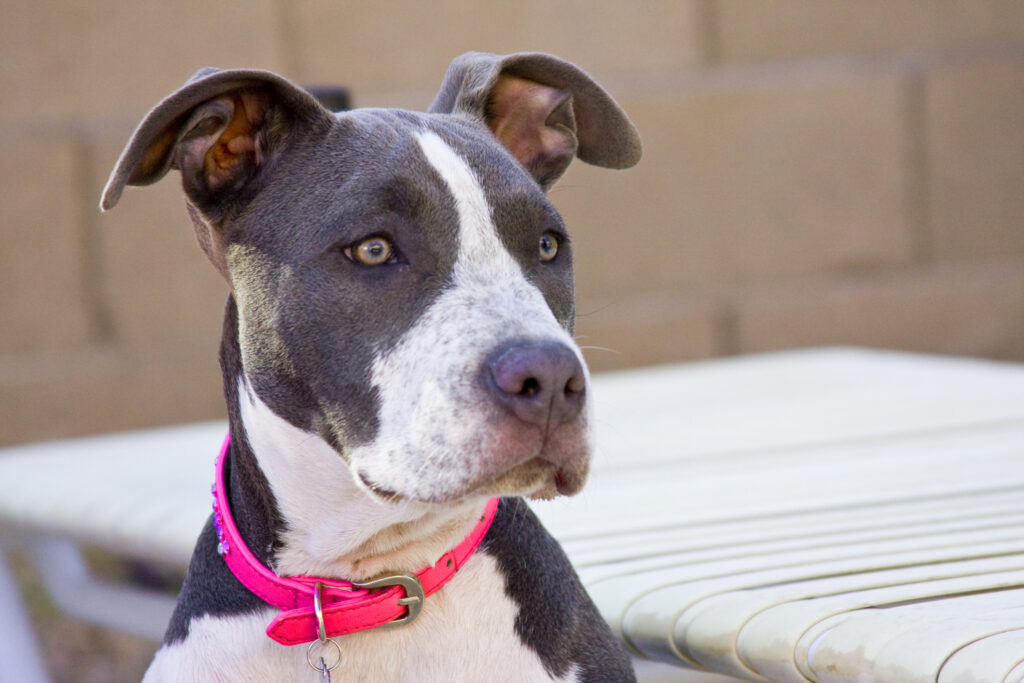
Obtaining Health Insurance
When exploring pet insurance options for Amstaffs and Pitbulls, potential owners may encounter breed-specific challenges.
Due to both the Amstaff and Pitbull reputations for aggression—often a misconception fueled by media portrayal and historical misuse in dog fighting—insurance companies might categorize them as high-risk. This categorization can manifest in several ways: insurers may offer policies with higher premiums, impose limited liability coverage, or include breed-specific exclusions, particularly for any claims associated with aggressive behavior.
Owners must be diligent in reviewing the terms and conditions of insurance policies, asking providers about any breed-related clauses. Some insurers might require a pet behavioral assessment or completion of certified training programs as a condition for coverage or to reduce premiums.
Transparency about the dog’s history, temperament, and any training they’ve received can also be beneficial when negotiating terms with an insurance company.
It’s advisable to look for insurance companies with policies tailored to the needs of these specific breeds or those that evaluate dogs on an individual basis rather than breed alone. Organizations advocating for these breeds may offer resources or recommendations for insurance providers known for their fair and inclusive coverage options.
As a pet owner, ensuring your Amstaff or Pitbull is well-trained and socialized not only helps mitigate potential issues but can also assist in securing more favorable insurance terms.
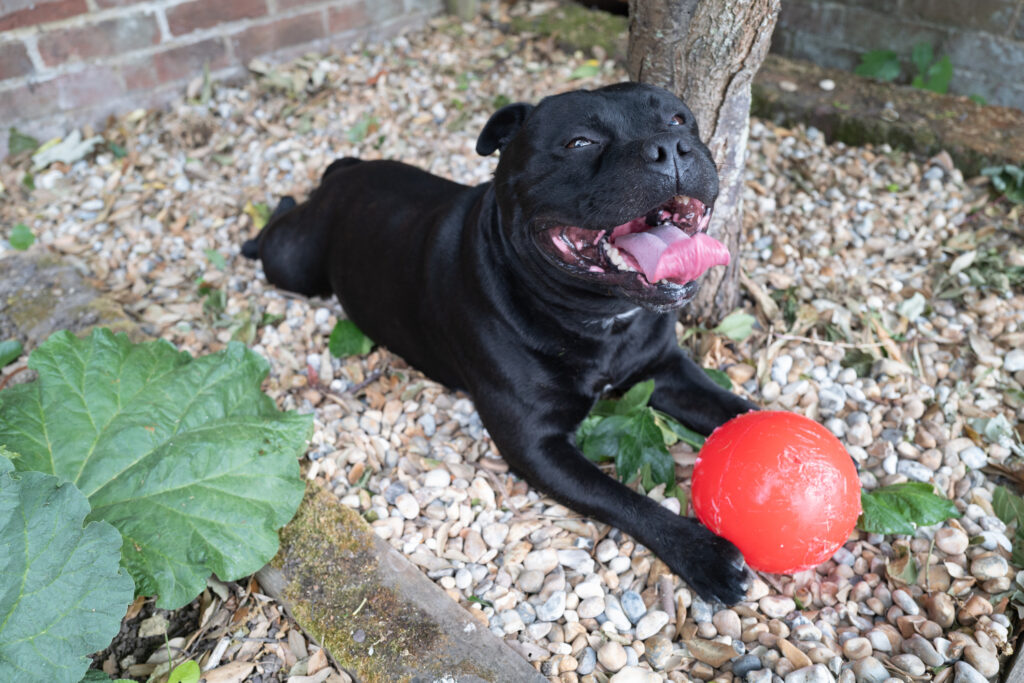
Airline Travel Restrictions
When it comes to airline travel with breeds like the American Staffordshire Terrier and the American Pit Bull Terrier, owners should be aware of specific restrictions and guidelines. Many airlines have breed-specific policies, often due to concerns about aggression or the potential for in-flight incidents.
Throughout our Amstaff vs Pitbull comparison we have found many similarities between these breeds, and airline travel restrictions are another. Amstaffs and Pitbulls may face airline limitations due to their classification within the group of breeds often labeled as “aggressive” or for having a strong jaw and bite. These breed-specific restrictions can range from outright bans on certain airlines to special requirements for reinforced crates.
Additionally, some airlines may require a behavioral certification or impose seasonal restrictions to ensure the safety and comfort of these breeds during travel. It’s essential for owners to consult with airlines well in advance of travel to understand all the requirements and prepare accordingly – policy and requirements vary between airlines and countries.
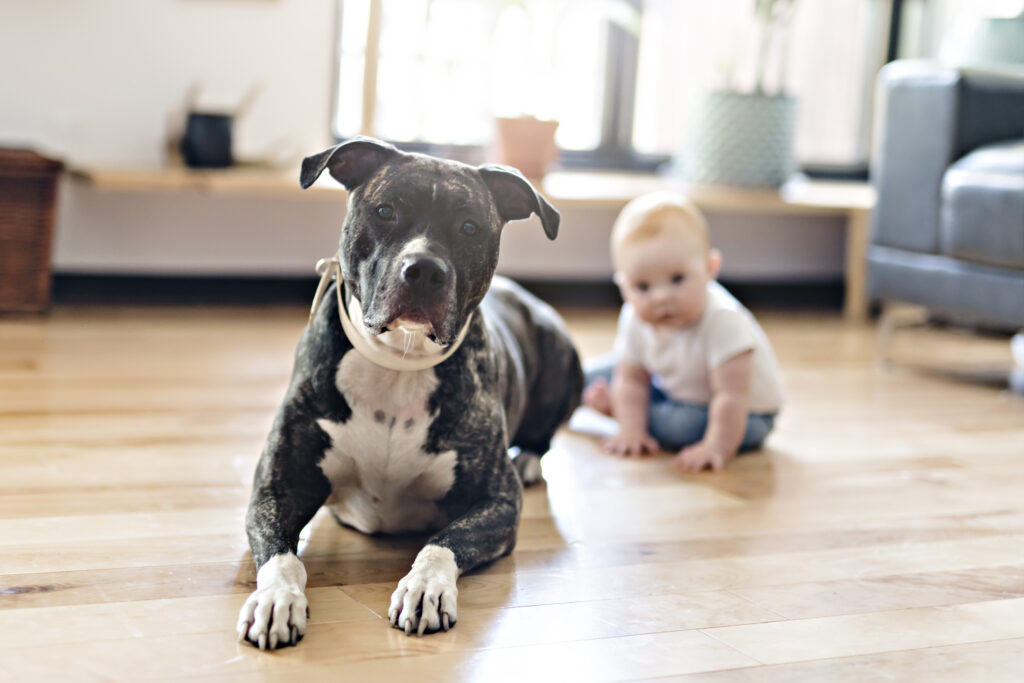
Legal and Social Considerations
Prospective owners of Amstaffs and Pitbulls should be aware of breed-specific legislation (BSL) that may exist in their area. BSL are laws that restrict or regulate the ownership of certain breeds, often based on the perception that these breeds pose a greater risk to public safety. This legislation can include requirements such as special licenses, mandatory spay/neuter programs, or even outright bans.
In addition to legal restrictions, housing challenges are also prevalent. Many rental and insurance companies have policies that restrict owning these breeds, citing increased liability risks. It’s essential for potential owners to research and understand the local regulations and housing policies related to these breeds to ensure compliance and to advocate for responsible ownership.
In the United States, breed-specific legislation varies significantly across different states and municipalities. Some cities, like Denver and Miami, have enacted bans that prohibit the ownership of breeds classified as Pit Bulls, which often include Amstaffs and Pitbulls.
Other jurisdictions may not ban these breeds outright but impose restrictions such as mandatory spay/neuter policies, special licensing, and muzzling in public spaces. Insurance companies in the U.S. may also deny homeowners’ insurance or increase premiums for owners of these breeds due to perceived risk factors.
Internationally, Australia and the United Kingdom take a more uniform approach to breed-specific legislation.
In Australia, Pitbulls are listed among breeds that are either restricted or banned, with owners required to adhere to stringent regulations, including mandatory neutering, secure enclosures, and distinctive collars for identification.
In the UK, under the Dangerous Dogs Act 1991, it’s illegal to own certain types of dogs, including the Pit Bull Terrier, without specific exemption from a court, which can include measures such as microchipping, insurance, and even the dog’s behavior.
These laws reflect the challenges owners face and the critical need for advocacy and responsible ownership to mitigate the stigma associated with these breeds.

History of Amstaffs & Pitbulls
The American Staffordshire Terrier and the American Pit Bull Terrier share a common lineage that traces back to England, where their ancestors were used for bull-baiting and bear-baiting. These cruel sports required a dog with great strength and tenacity.
Following the outlawing of these activities, the dogs were brought to the United States, where they were bred to enhance their positive traits, such as loyalty and tenacity. They were utilized on farms to protect property against wild animals, to hunt, and to serve as family companions, earning their place as versatile and valued working dogs.
As society progressed, so did the roles of these breeds. Their strength and intelligence made them suitable for a variety of tasks beyond the farm. In the early 20th century, Pit Bulls in particular were symbols of American courage and determination, even serving as military mascots and featured on propaganda posters during World War I. Their friendly nature and patience with children gained them the affectionate title of “nanny dogs,” reflecting their role as protectors and playmates for young ones.
Over time, these breeds have shown that they are capable of much more than their historical uses, excelling as service dogs, in therapy roles, and as beloved family pets, showcasing their adaptability and enduring desire to be an integral part of human life.
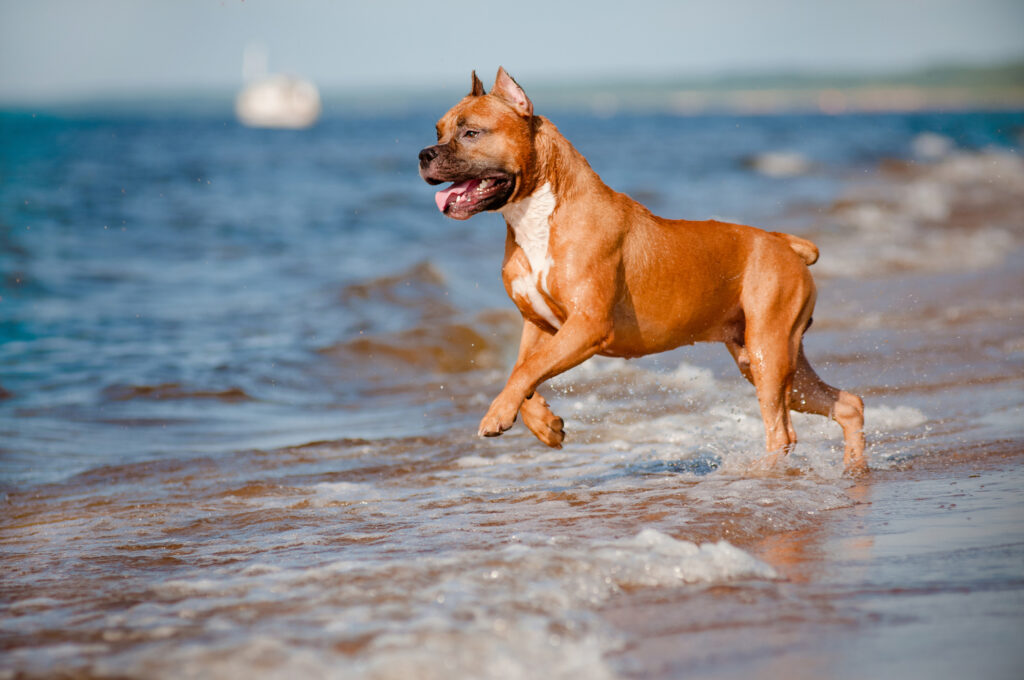
Final Thoughts
So.. Amstaff vs Pitbull: Which Breed is Right for You?
As a potential owner deciding between Amstaff vs Pitbull, you must carefully consider the commitment level required, and what life might be like when welcoming one of these lovable pooches into your family.
Let’s summarize the key factors to consider:
- Assess Lifestyle: Consider your activity level. Amstaffs may do well with moderate exercise while Pitbulls often require more vigorous activity
- Space Requirements: Ensure your living environment suits the breed’s size and energy level. Amstaffs are suitable for smaller living spaces, provided they have daily exercise. Pitbulls are ideal for homes with more space, especially a yard, due to higher energy levels
- Training Commitment: Be prepared for consistent, positive training, especially if choosing a Pitbull, due to their strong will
- Legalities: Check local regulations for breed restrictions or specific requirements
- Insurance: Be aware of possible higher insurance premiums or restrictions for both breeds
- Family Dynamics: Both Amstaffs and Pitbulls can be great with children when properly socialized, but ensure children know how to interact safely with dogs
- Grooming: Both Amstaffs and Pitbulls have relatively low grooming needs compared to many other dogs, easing this aspect of care
- Healthcare: Plan for regular veterinary check-ups and understand any breed-specific health concerns.
It is essential to consider the above when choosing the breed that aligns best with your lifestyle and commitment to responsible dog ownership. Ultimately, both the Amstaff and the Pitbull can make wonderful family pets with the right training, socialization, and care.
We cannot emphasize this enough – it is the commitment to responsible ownership and understanding of the breed’s needs that will ensure a good fit for your family.

Frequently Asked Questions (FAQ)
Are Amstaffs more aggressive than Pitbulls?
Amstaffs and Pitbulls both hail from similar lineages and are often misunderstood due to their historical roles in dog fighting. However, aggression is not a trait specific to any breed; it is more often a result of upbringing, training, socialization, and individual temperament. Neither breed is inherently more aggressive than the other. Both can show great affection and loyalty, and with proper care, they can be gentle and friendly companions. It’s the environment and the owner’s approach to training that play significant roles in shaping the behavior of any dog.
What two breeds make an Amstaff?
The American Staffordshire Terrier, commonly known as the Amstaff, has its origins in the region of Staffordshire, England, where it was bred from the bulldog and various terrier breeds. The exact terrier breeds used to develop the Amstaff are not specified, as it was a crossbreeding of several types to achieve a dog that combined the strength of the bulldog with the agility of terriers. Over time, these crosses resulted in the breed known today as the American Staffordshire Terrier.
Why is my American Staffy so aggressive?
If your American Staffordshire Terrier is displaying aggression, it could be due to a variety of reasons including lack of socialization, fear, territorial behavior, dominance issues, or even a medical condition. It’s important to identify the root cause of the aggression. For behavioral concerns, consulting a professional dog trainer or a veterinary behaviorist can provide guidance tailored to your specific situation.
How can I tell if my dog is an AmStaff or a Pitbull?
Determining whether your dog is an AmStaff or a Pitbull can be done by checking pedigree papers, observing physical traits like head shape and body build, and comparing these to breed standards. For a precise identification, consider a DNA test. Professional advice from a vet or a dog breed expert can also aid in distinguishing between the two breeds.

Victoria Bennett
Latest From Our Blog










